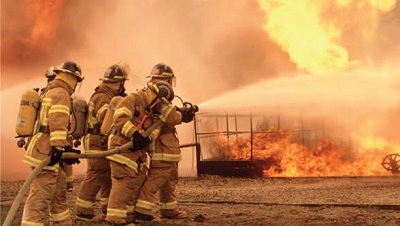Context
Recent tragic events have highlighted the severe shortcomings in fire safety regulations in India, drawing attention to the urgent need for stricter enforcement and compliance with existing laws. On May 25, a devastating fire at a gaming center in Rajkot, Gujarat, claimed the lives of at least 32 people. This incident, along with a separate fire at a hospital for newborns in Delhi that resulted in the deaths of seven infants, underscores the critical importance of fire safety measures in public buildings and venues.
The Rajkot Gaming Centre Tragedy
The inferno at the TRP Game Zone in Rajkot, Gujarat, was a catastrophic event that unfolded in the evening of May 25. The fire spread rapidly through the structure, which was built with a metal frame and sheets, trapping victims inside, including several children. In response to the disaster, two inquiries were initiated: one by a Special Investigation Team (SIT) set up by the State government, and another by the Rajkot police. Additionally, the Gujarat High Court took suo motu cognizance of the incident, leading to the transfer of key officials, including the Police Commissioner, Additional Commissioner, and Municipal Commissioner. Several municipal officials were suspended, and four individuals, including the game zone operator, were arrested.
The New Born Baby Care Hospital Fire
On the same day, a fire at the New Born Baby Care Hospital in Vivek Vihar, Delhi, resulted in the tragic deaths of seven infants. The preliminary investigation suggested that the presence of numerous oxygen cylinders in the facility exacerbated the fire. The owner of the hospital and the doctor on duty were arrested following the incident. Both the Rajkot and Delhi fires have raised critical questions about the issuance of fire certifications and No Objection Certificates (NOC), and the apparent neglect of authorities to address visible illegalities.
The framework for fire safety in India is primarily provided by the Model Building Bye-Laws, 2016, and the National Building Code (NBC). These regulations outline comprehensive fire protection and safety requirements that state governments are responsible for implementing. According to these laws, structures like the Rajkot game zone, which would be classified as assembly buildings, must adhere to stringent fire safety norms. Assembly buildings are defined broadly to include venues where 50 or more people gather for various purposes, such as theaters, restaurants, and recreational centers.
Hospitals and other institutional buildings have their specific regulations under the NBC. During the COVID-19 pandemic, the Health Ministry issued guidelines in September 2020, mandating third-party accreditation for fire safety and the implementation of a fire response plan. For buildings 49 feet in height or higher, and those with lower occupancies in different categories, these regulations are crucial for obtaining an NOC.
In addition to national regulations, states have their own laws. For example, Gujarat's Comprehensive Development Control Regulations 2017 require the opinion of the Chief Fire Officer even for temporary structures. These regulations also mandate that all buildings meet the fire prevention and safety standards set by the Fire Authority under the Fire Prevention and Life Safety Measures Act, 2013. However, in the case of the Rajkot game zone, the structure was allegedly built to evade these regulatory requirements.
Judicial Response to Fire Safety Negligence
Indian courts have historically taken a strong stance against negligence in fire safety. One of the most notable cases is the 1997 Uphaar cinema tragedy in Delhi, where a fire led to the deaths of 59 people. The owners of the cinema, Sushil and Gopal Ansal, were convicted of negligence and tampering with evidence. The court held them responsible for structural deviations and safety violations that contributed to the high death toll. This case highlighted the judiciary's willingness to hold property owners and regulatory authorities accountable for lapses in safety.
The Gujarat High Court's suo motu action following the Rajkot fire indicates a continued judicial focus on enforcing fire and building laws. The court's scrutiny has revealed numerous unauthorized venues offering leisure and entertainment services in the state. The court was informed that the Gujarat Regularisation of Unauthorised Development Act, 2022, had been used by some of these venues to apply for regularization, even though they did not comply with safety standards.
The Need for Enforcement and Compliance
The National Crime Records Bureau (NCRB) data indicates that in 2022 alone, 241 fires occurred in commercial buildings, and 42 in government buildings, resulting in 257 fatalities. These statistics highlight the critical need for rigorous enforcement of fire safety provisions outlined in the building code and the Model Building Bye-Laws. Ensuring accountability from state and enforcement agencies is essential to prevent future tragedies.
Conclusion
The tragic fires in Rajkot and Delhi have brought to light the dire state of fire safety compliance in India. These incidents have not only caused immense loss of life but have also exposed significant gaps in the enforcement of fire safety regulations. To prevent such tragedies in the future, it is imperative to tighten the implementation of existing laws, ensure full accountability of property owners and regulatory bodies, and enhance the infrastructure and training required for effective fire safety management. Only through a concerted effort to address these issues can the safety of public buildings and venues be assured.
|
Probable Questions for UPSC Mains Exam
|
Source - The Hindu







